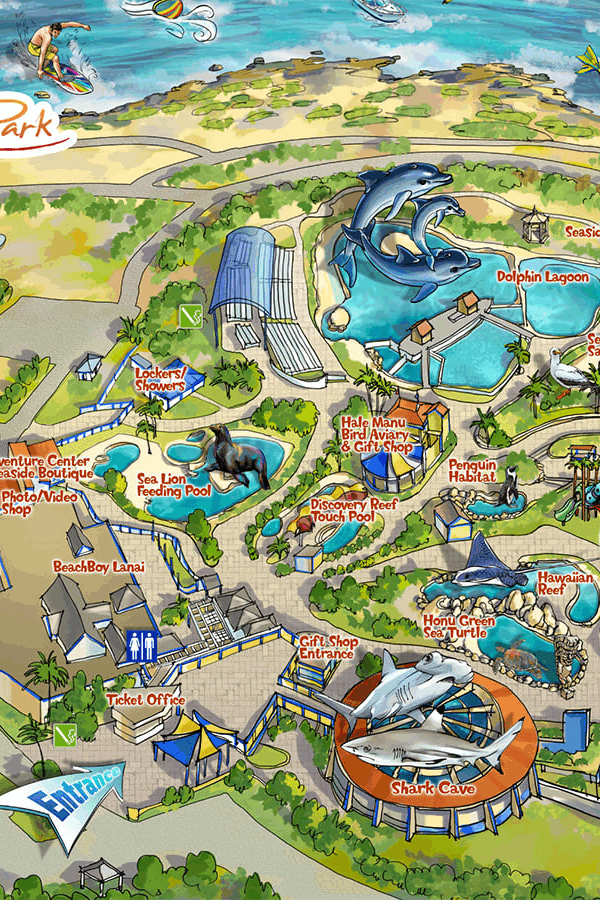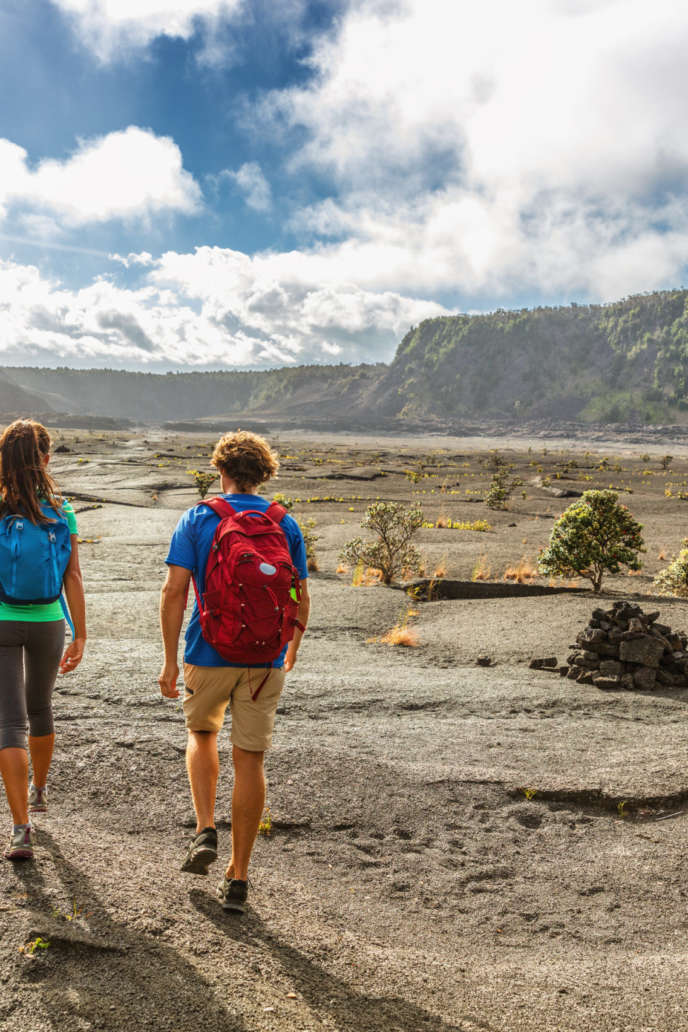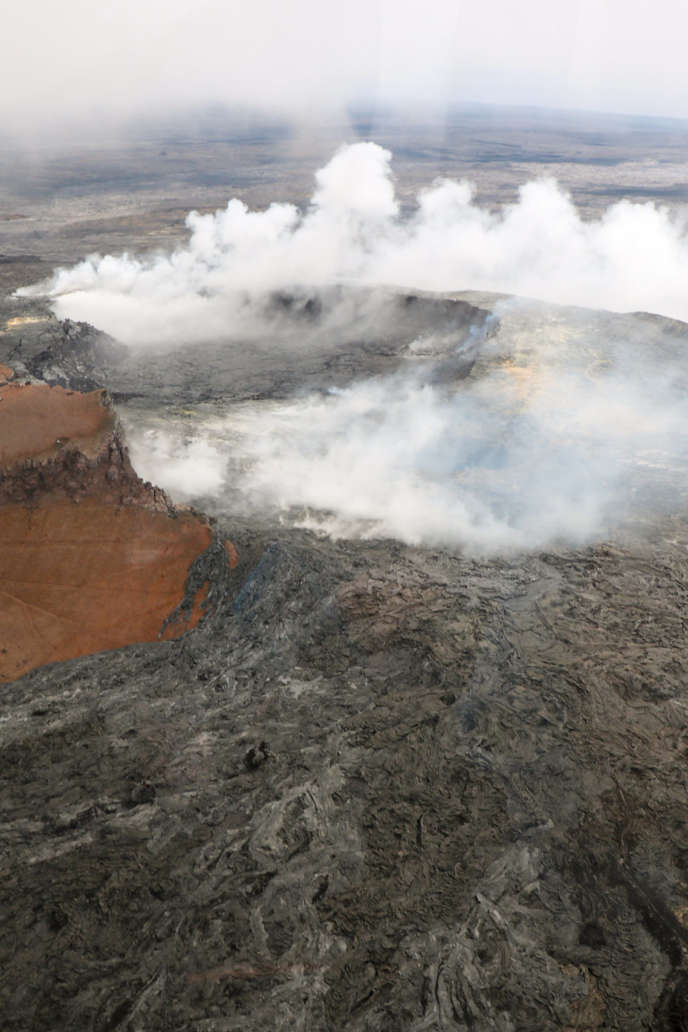Hawaii Volcanoes National Park is an unparalleled natural wonder. It is the home to two of the world’s most active volcanoes, Kīlauea and Mauna Loa. The park’s significance stretches beyond its geological marvels, delving deep into a rich tapestry of cultural history that reflects the profound connection between the native Hawaiian people and their land. With its unique volcanic features, from smoldering craters to dynamic lava flows that shape the landscape, Hawaii Volcanoes National Park offers an unforgettable journey through the very heart of our planet’s fiery energy. Let’s learn more about this awe-inspiring process of creation and destruction.
Highlights
- Experience the raw power of Earth’s natural forces. Witness the volcanic activity, including lava flows, depending on current volcanic activity and safety conditions.
- Traverse through distinct ecological zones that range from lush rainforests to barren deserts, all within the park’s boundaries.
- Ancient petroglyphs, historic trails, and the Halema’uma’u Crater, which plays a significant role in Hawaiian mythology as the home of Pele, the volcano goddess, offer visitors a glimpse into Hawaii’s past
- With over 150 miles of trails, the park caters to all levels of hiking enthusiasts, from leisurely walks through volcanic craters and rainforests to challenging treks across rugged lava fields.
- With a visitor center that offers educational programs, guided tours, and interactive exhibits, guests can learn about volcanic processes, environmental conservation, and the cultural history of the Hawaiian Islands.
History
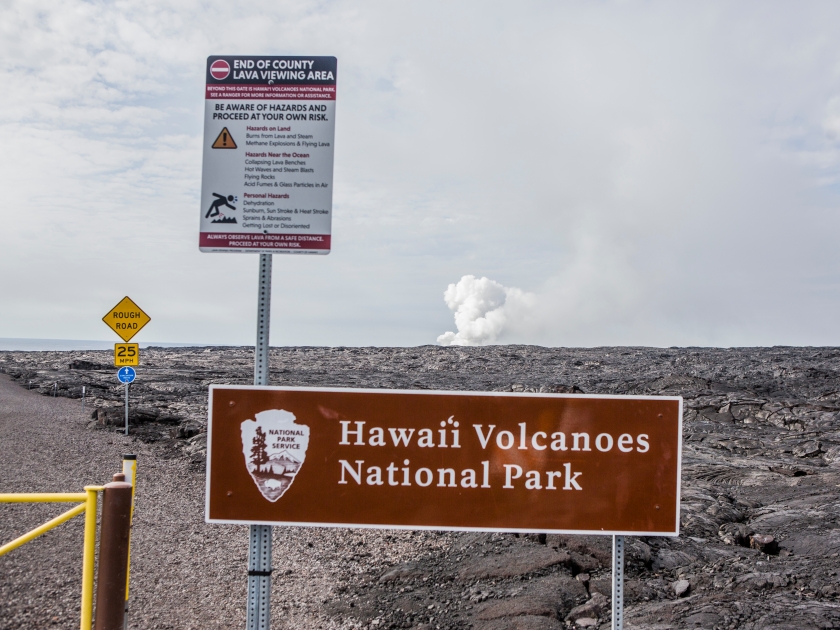
Native Hawaiian Presence
Long before the concept of a national park existed, Native Hawaiians revered the land that is now Hawaii Volcanoes National Park. For centuries, this area was considered sacred ground, a living abode for Pele, the goddess of volcanoes and fire. The indigenous people’s deep respect and spiritual connection to the land highlight the area’s cultural significance and its long-standing reverence in Hawaiian tradition.
Early European Encounters
The late 18th century brought European explorers to the shores of Hawaii. Arriving in the 1778, these newcomers were among the first outsiders to witness the majestic and volatile beauty of the Hawaiian volcanoes. Tragically, some of these early explorers experienced the deadly force of the volcanoes firsthand, caught in violent eruptions that demonstrated the unpredictable nature of this stunning landscape.
Tourism and Preservation
By the mid-19th century, word of the volcanic wonders of Hawaii had spread far and wide, attracting tourists to the area by the 1840s. Recognizing the need to accommodate the influx of visitors, hotels and other infrastructures were established, making the volcanoes accessible to people from around the world. The growing popularity and international interest in these natural wonders led to a pivotal moment in 1916 when the area was officially established as Hawaii National Park. This designation marked the beginning of formal efforts to preserve the unique volcanic landscape for future generations.
Splitting the Park
In 1961, a significant reorganization took place, splitting the original park to better manage and protect its distinct elements. This redefinition resulted in the creation of the current Hawaii Volcanoes National Park, with a focused emphasis on the active volcanoes Mauna Loa and Kilauea. This strategic division aimed to enhance the conservation of the park’s key features and ensure the continued study and appreciation of its dynamic volcanic processes.
Modern Recognition
The global significance of Hawaii Volcanoes National Park was officially recognized in 1987 when it was designated as a World Heritage Site. This prestigious acknowledgment highlights the park’s outstanding natural beauty, ecological diversity, and cultural importance. It underscores the park’s role not only as a national treasure but also as a vital part of our world’s natural heritage, celebrated and protected for its unparalleled contribution to understanding Earth’s volcanic phenomena and the rich cultural history of Hawaii.
Key Attractions within the Park

- Kīlauea Volcano: One of the most active volcanoes on Earth, Kīlauea offers visitors the chance to witness volcanic activity up close, including lava flows and volcanic eruptions, depending on current activity levels.
- Mauna Loa Volcano: The largest volcano on Earth by volume and area covered, Mauna Loa is a massive shield volcano that provides unique hiking opportunities and stunning views of the Hawaiian landscape.
- Thurston Lava Tube (Nāhuku): A natural tunnel formed by flowing lava, the Thurston Lava Tube allows visitors to walk through a cooled, hollowed-out section of what was once a river of molten rock.
- Halemaʻumaʻu Crater: Located within the summit caldera of Kīlauea, this crater has been the site of numerous eruptions and is a sacred place in Hawaiian culture. Visitors can view the crater from various overlooks around the summit area.
- Chain of Craters Road: This scenic drive descends from the park’s lush rainforest to its stark, lunar-like coastal plain, passing several craters, ancient lava flows, and the sea arch.
- Puʻu Loa Petroglyphs: A sacred site featuring thousands of ancient petroglyphs carved into the lava rock, offering a glimpse into the lives and beliefs of the native Hawaiian people.
- Crater Rim Drive: This drive offers stunning views of the Kīlauea Caldera, volcanic landscapes, and several key features of the park, including steam vents and the Kīlauea Iki overlook.
- Volcano Art Center: Located in the historic Volcano House Hotel, the center showcases the work of local artists, inspired by the unique volcanic landscape and cultural heritage of Hawaii.
- Devastation Trail: A short walk that leads through an area devastated by the 1959 Kīlauea Iki eruption, highlighting the destructive power and regenerative process of volcanic activity.
Things to Do
Explore the Active Volcanoes
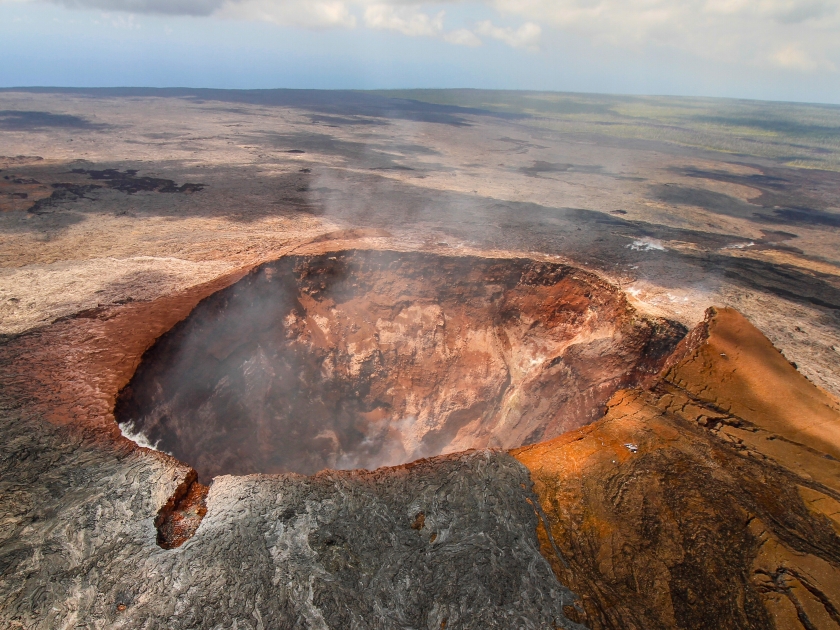
Experience the thrill of exploring Kīlauea and Mauna Loa, two of the most active volcanoes in the world, within Hawaii Volcanoes National Park. These natural wonders offer a unique opportunity to witness the power of Earth’s geological processes up close. Visitors can stay informed about current volcanic activity through updates provided by the park, ensuring a safe and enlightening adventure. The dynamic landscapes shaped by these giants provide a once-in-a-lifetime opportunity to step into a living laboratory of volcanic activity.
View Lava Flows Safely

Witnessing the mesmerizing flow of lava is a highlight for many visitors to Hawaii Volcanoes National Park. The park provides guidelines and designated viewing areas to ensure that you can safely observe these natural wonders. Whether it’s the glowing rivers of molten rock by night or the slow, destructive path of lava during the day, viewing these flows is an unforgettable experience that captures the raw beauty of nature’s force.
Hiking Trails and Guided Tours

With trails that cater to all skill levels, Hawaii Volcanoes National Park is a hiker’s paradise, offering breathtaking views and diverse ecosystems. From leisurely walks through lush rainforests to challenging treks across rugged lava fields, there’s a path for every adventurer. For those looking to delve deeper, guided tours and educational programs provide insightful narratives about the park’s geology, ecology, and cultural history, enhancing the hiking experience.
Visit Cultural Sites and Exhibits
Immerse yourself in the rich cultural heritage of Hawaii at the park’s numerous cultural sites and exhibits. Explore the Puʻu Loa Petroglyphs, where ancient carvings etched into lava rock tell stories of the native Hawaiian people and their connection to the land. The park’s visitor centers and museums offer a wealth of information and displays that celebrate the history, traditions, and resilience of Hawaii’s indigenous cultures, providing a deeper understanding of this sacred landscape.
Photography and Best Spots for Views
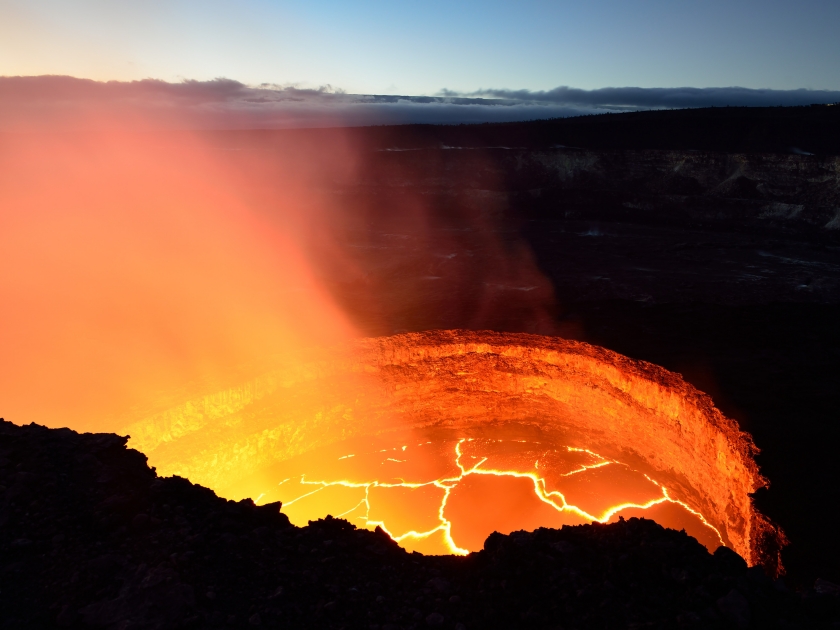
From the majestic caldera of Kīlauea under the soft glow of dawn to the stark, surreal beauty of vast lava fields stretching to the sea, the park presents endless opportunities for capturing stunning photographs. For those looking to immortalize the park’s unique landscapes, consider using filters to enhance the vibrant colors of the flora and the stark contrasts of the volcanic terrain. Be mindful of the park’s regulations on drone usage and photography to ensure that these activities do not disturb the natural environment or wildlife, allowing for a respectful and rewarding photographic experience.
Visitor Services and Amenities
Hawaii Volcanoes National Park ensures a comfortable and convenient visit with a range of visitor services and amenities. The park offers several dining options, from quick bites to full meals, located both within and near its boundaries. Unique gift shops scattered throughout the park provide a selection of souvenirs, from local crafts to educational books, allowing you to take a piece of your adventure home. Well-maintained restroom facilities are readily accessible throughout the park, with features designed to accommodate visitors of all abilities, ensuring that everyone can enjoy the wonders of Hawaii Volcanoes National Park with ease.
Accommodations and Camping
Camping in the Park: Sites and Permits
For those seeking an immersive experience, Hawaii Volcanoes National Park offers several camping options, including the Nāmakanipaio Campground with its lush, grassy expanses, and the Kulanaokuaiki Campground, where night skies offer unparalleled stargazing opportunities. Permits are required for certain areas, especially for those venturing into the backcountry, ensuring a balance between visitor experiences and the preservation of the park’s natural beauty.
Nearby Accommodations: Hotels and Lodges
Visitors looking for comfort close to the park can find a range of accommodations to suit all preferences. The Volcano House, located within the park’s boundaries, offers stunning views of the Kīlauea caldera, while just a short drive away, the town of Volcano boasts charming lodges and bed-and-breakfasts like the Volcano Village Lodge and the Kilauea Lodge, providing cozy retreats amidst a cool, forested landscape.
Backcountry Camping Guidelines
For the adventurous at heart, backcountry camping in Hawaii Volcanoes National Park offers an unparalleled connection with nature. Venturing into areas like the Mauna Loa wilderness requires a permit, obtainable from the park’s visitor center. Campers must follow strict guidelines designed to protect both the fragile ecosystems and themselves, including packing out all trash, using designated camping spots, and being fully prepared for the park’s changing weather conditions. This allows for a truly wild experience, offering solitude and breathtaking natural beauty.
Entrance Fees and Park Passes
To explore the wonders of Hawaii Volcanoes National Park, visitors are required to pay an entrance fee, which grants access for 7 days. Fees vary depending on the mode of transportation, with individual passes available for those entering by foot, bicycle, or motorcycle, and vehicle passes for cars, which cover all passengers. Annual passes are also available for frequent visitors, offering unlimited access to the park. These fees are vital for the maintenance of the park and the preservation of its natural and cultural resources, ensuring that it remains a treasure for future generations.
Best Times to Visit
The best time to visit Hawaii Volcanoes National Park largely depends on personal preferences and tolerance for varying weather conditions. The park is open year-round, offering a different experience each season. The dry season, from May to October, features clear skies and warmer temperatures, ideal for hiking and exploring the vast landscapes. Conversely, the wet season, from November to April, brings cooler temperatures and frequent rain showers, which can add a mystical quality to the lush, verdant surroundings but may also require more preparation for outdoor activities.
Tips for Visiting
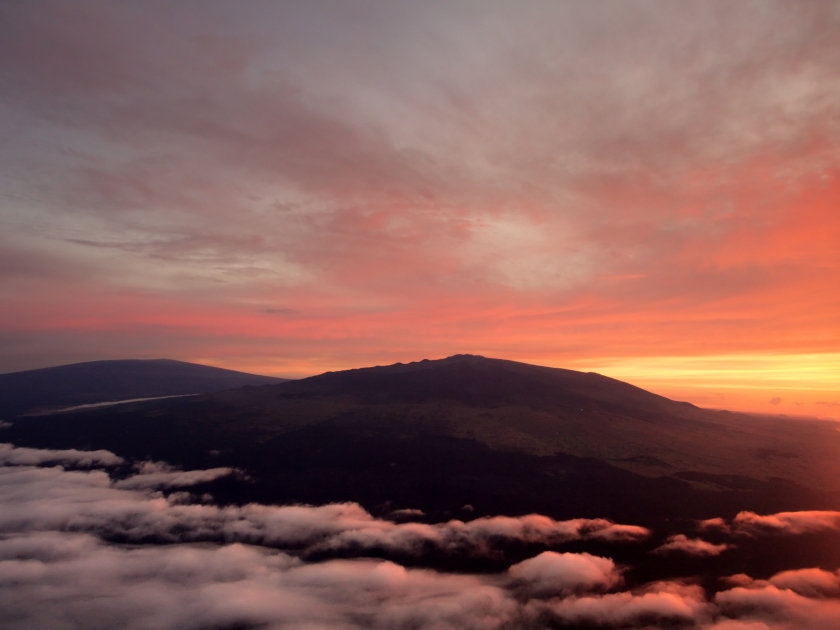
Safety Tips for Visiting Volcanic Areas:
- Stay on marked trails and respect all barriers and signs.
- Keep a safe distance from volcanic vents and lava flows.
- Be aware of gas emissions and follow park advisories on air quality.
- Have a plan for quickly leaving the area in case of sudden volcanic activity.
What to Bring: Essential Gear and Supplies:
- Sturdy hiking boots or shoes suitable for rugged terrain.
- Water, snacks, and additional food supplies for longer hikes.
- Sun protection: sunscreen, hat, and sunglasses.
- Rain gear, as the weather can change rapidly.
- A flashlight or headlamp, especially if exploring caves or planning to stay until dusk.
Health Advisories and Accessibility Information:
- Visitors with respiratory issues should check air quality reports and avoid areas with high volcanic gas emissions.
- Pregnant women, young children, and individuals with health concerns should take extra precautions and consult with healthcare providers before visiting.
- The park offers several accessible trails and facilities for visitors with mobility challenges. Detailed information is available on the park’s website or visitor center.
Frequently Asked Questions (FAQs)
Hawaii Volcanoes National Park is renowned for housing two of the world’s most active volcanoes, Kīlauea and Mauna Loa. It offers unique opportunities to witness live volcanic activity, explore craters, and see the natural process of land formation.
Key attractions include the Kīlauea Visitor Center, Crater Rim Drive, the Thurston Lava Tube (Nāhuku), and the Chain of Craters Road. The Halema‘uma‘u Crater, visible from the Jaggar Museum overlook, is also a highlight.
Lava viewing opportunities vary based on volcanic activity. The park offers chances to see surface lava flows when Kīlauea or Mauna Loa are actively erupting. Always check the park’s official website or visitor center for the latest lava viewing conditions and safety guidelines.
Yes, the park features over 150 miles of hiking trails that range from easy walks to challenging backcountry treks. Popular trails include the Kīlauea Iki Trail, the Devastation Trail, and the Sulphur Banks Trail.
Yes, there is an entrance fee that grants access for 7 days. Fees vary for vehicles, pedestrians, and motorcycles. Annual passes are also available. Check the National Park Service website for the most current fee structure.
Facilities include the Kīlauea Visitor Center, Jaggar Museum, restrooms, picnic areas, and campgrounds. There are also a few dining options within the park. For accommodations, visitors can stay at the Volcano House or choose from several campgrounds and backcountry camping areas.
How to Get There
By Car
Getting to Hawaii Volcanoes National Park, a majestic showcase of nature’s power, can be an adventure in itself. If you’re traveling by car, the park is about a 45-minute drive from Hilo and a 2-hour drive from Kailua-Kona via Highway 11, offering scenic views along the way. Ensure you have enough fuel, as gas stations are sparse near the park.
By Bus
For those preferring public transport, the Hele-On bus from the County of Hawai‘i Mass Transit Agency provides service between Hilo and the park. However, plan carefully as the schedules may not align perfectly with your itinerary, and services are limited. Remember, whether by car or bus, the journey to Hawaii Volcanoes National Park is part of the unforgettable experience of visiting one of the world’s most active volcanic areas.
Voyage into the Heart of Nature’s Power and Beauty!
As you plan your visit, remember the importance of exploring responsibly, respecting the natural environment, and preserving the cultural heritage that makes this place so unique. The park’s global significance as a site of natural wonder and scientific research is a reminder of our shared responsibility to protect these invaluable resources for generations to come. We encourage you to deepen your experience by booking guided tours, which offer insightful perspectives and stories behind the stunning vistas and geological marvels.


